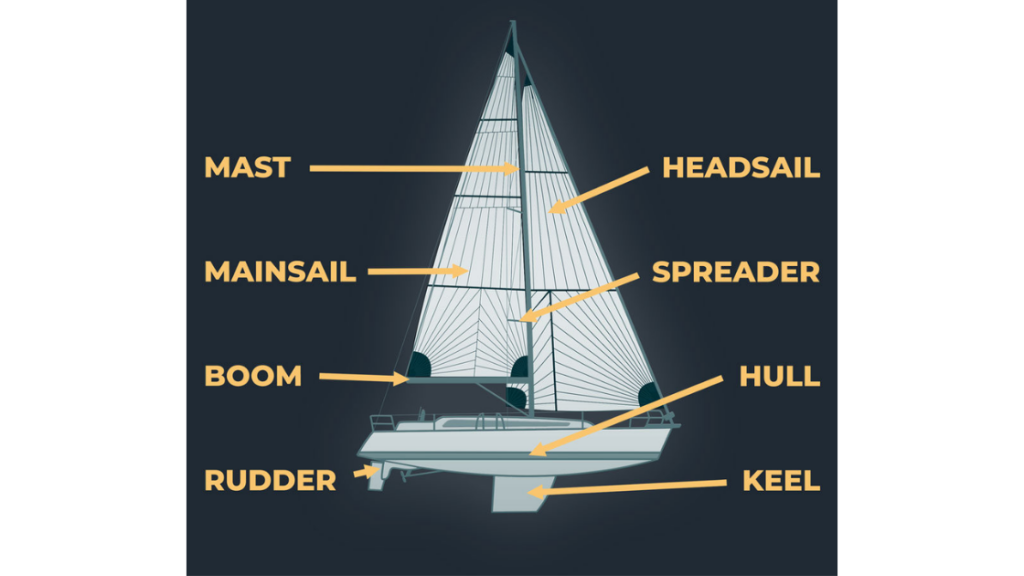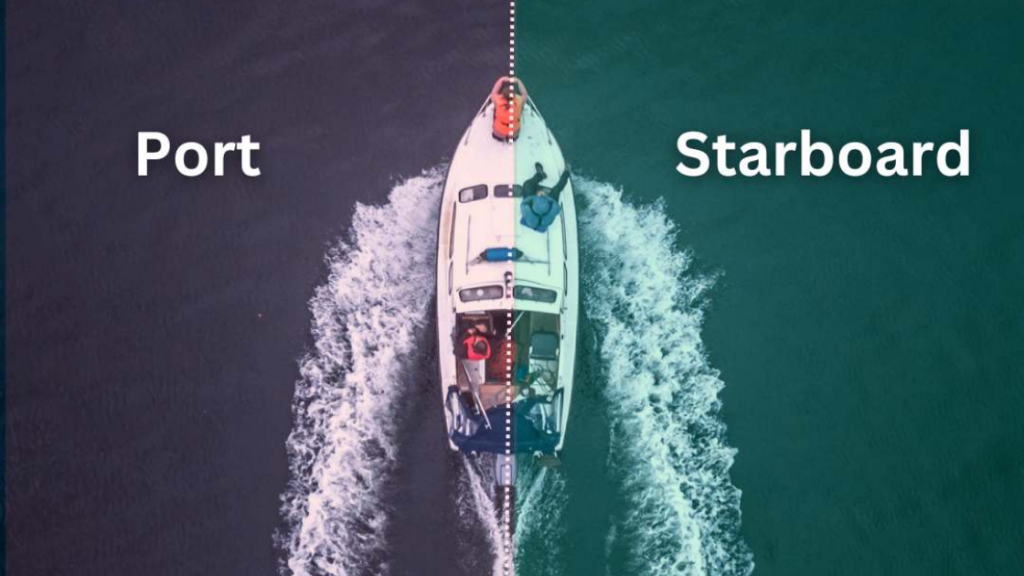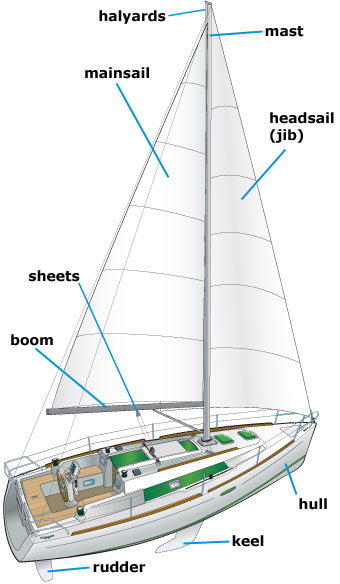Essential Terminology Every Boater Should Know
February 14th, 2025 by team

Stepping onto a boat for the first time can feel like walking into a foreign country where everyone speaks a different language. You might hear phrases like “grab that line on the starboard side” or “watch the boom!” and have no idea what they mean. Don’t worry—you’re not alone. Every seasoned sailor was once a beginner, just like you. Understanding essential boating terminology will not only help you communicate effectively but also make you feel more confident on the water. So, let’s break it down in a way that’s easy to digest.
Basic Boat Parts

Let’s start with the boat itself. You wouldn’t drive a car without knowing where the steering wheel is, right? Same goes for boating.
- Bow & Stern – The bow is the front of the boat, while the stern is the back. If you’re ever confused, just remember: “Bow forward, stern backward.”
- Port & Starboard – Instead of saying left and right, boaters use port (left) and starboard (right). A handy trick to remember: “Port” and “left” both have four letters.
- Hull – The hull is the main body of the boat, the part that actually floats on water. Without it, well, you wouldn’t be going anywhere.
- Deck – Think of the deck as the “floor” of the boat, the area where you walk and move around.
- Helm – This is where the magic happens! The helm is where you steer the boat, usually with a wheel or a tiller.
- Keel – A keel is a structure on the bottom of some boats that helps with stability. It prevents the boat from drifting sideways due to wind or currents.

Navigational Terms
Now that you know the basic parts of the boat, let’s talk about moving it. When you hear these terms, you’ll sound like you’ve been doing this for years.
- Bearing – This is the direction you’re traveling, measured in degrees. Think of it like your boat’s compass reading.
- Buoy – These floating markers serve as your traffic signs on the water. Some warn you of dangers, while others help you navigate channels.
- Draft – If you’re in shallow water, this is a big one. The draft is the distance from the ground to the bottom of the boat. Knowing this helps you avoid running aground.
- Wake – Ever noticed the waves behind a moving boat? That’s the wake. If you’re near other boats, be mindful of your wake so you don’t rock them too hard.
- Knot – Speed on water isn’t measured in miles per hour—it’s measured in knots. One knot equals about 1.15 miles per hour.
- Nautical Mile – A nautical mile is slightly longer than a standard mile (1.15 land miles, to be exact). It’s the standard unit of measurement for distances on the water.
Sailing-Specific Terms
For those of you interested in sailing, here are some terms that will come in handy when you hoist the sails.

- Mast & Boom – The mast is the tall vertical pole that holds the sails. The boom is the horizontal pole at the bottom of the sail that swings from side to side when you change direction. (Watch your head—it’s called a “boom” for a reason!)
- Jib & Mainsail – The jib is the smaller sail in the front, while the mainsail is the big one attached to the boom.
- Tacking & Jibing – These are ways to turn the boat depending on the wind direction. Tacking involves turning the bow through the wind, while jibing means turning the stern through the wind. Jibing is trickier, as it can make the boom swing suddenly.
- Reefing – When the wind picks up, reefing allows you to reduce the sail area to maintain better control and avoid being overpowered.
Docking & Anchoring Terms
Docking and anchoring can be stressful, but knowing the right words can make it easier to communicate with your crew.
- Mooring – Tying up your boat to a dock, buoy, or fixed anchor point.
- Cleat – These T-shaped fittings on the boat and dock are used to secure ropes (or “lines”).
- Fender – Think of these as bumpers for your boat. They prevent damage when docking by cushioning the impact.
- Anchor – Used to keep your boat from drifting when you want to stay put. Different types of anchors work better in different seabeds.
- Scope – The length of anchor line you need in relation to the depth of the water. A good rule of thumb is a 5:1 ratio in calm conditions.
Emergency & Safety Terms
Boating is fun, but safety is key. These terms will help you stay prepared.
- Mayday – The international distress signal. If you ever hear it, someone is in serious trouble.
- Pan-Pan – A call for help that’s urgent but not life-threatening.
- Man Overboard (MOB) – If someone falls into the water, this is what you yell to alert others.
- Bilge – The lowest part of the boat where water collects. Too much water here is a bad sign.
- Life Raft – An emergency inflatable raft used if the boat has to be abandoned.
Final Thoughts
Learning boating terminology isn’t just about sounding like a pro—it’s about safety, communication, and confidence. The more you understand, the more you’ll enjoy your time on the water. So, next time someone yells, “Grab that line off the port side!” you’ll know exactly what to do. Happy sailing!
- Posted in Blog, Boat Care, Boating Tips, Cruising, Fishing, iNavX, iNavX: How To, Navigation, News, Reviews, Sailing, Sailing Tips
- 1 Comment
- Tags: boat terminology, bow, helm, hull, port, starboard, stern, terminology


February 23, 2025 at 3:48 am, Katy Eymann said:
you are mistaken to say…
Draft – If you’re in shallow water, this is a big one. The draft is the distance from the waterline to the bottom of the boat. Knowing this helps you avoid running aground.
Knowing that number will not help you avoid running aground. Knowing the distance from the sea floor to the bottom of the boat is helpful.